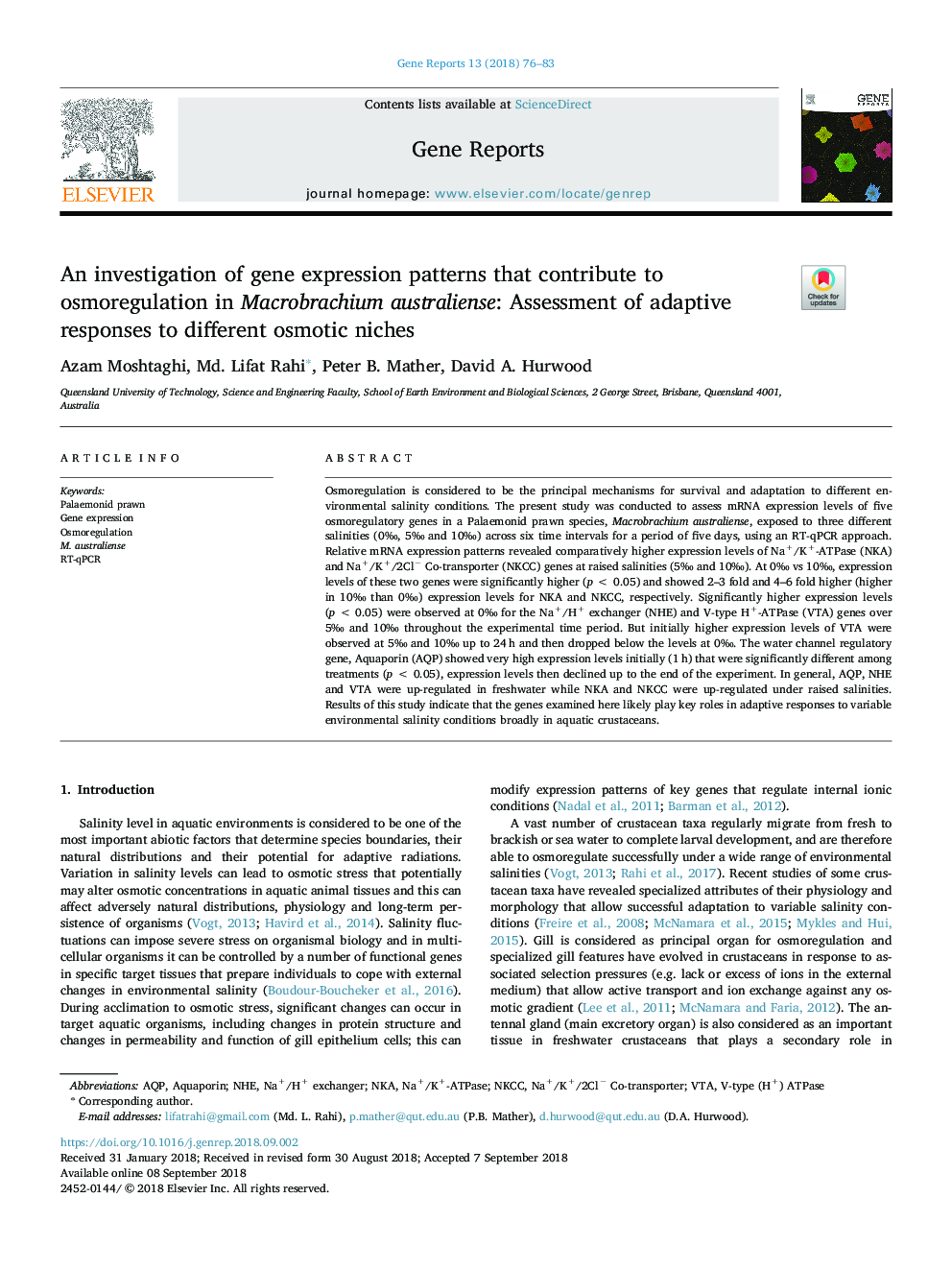| Article ID | Journal | Published Year | Pages | File Type |
|---|---|---|---|---|
| 9955329 | Gene Reports | 2018 | 8 Pages |
Abstract
Osmoregulation is considered to be the principal mechanisms for survival and adaptation to different environmental salinity conditions. The present study was conducted to assess mRNA expression levels of five osmoregulatory genes in a Palaemonid prawn species, Macrobrachium australiense, exposed to three different salinities (0â°, 5â° and 10â°) across six time intervals for a period of five days, using an RT-qPCR approach. Relative mRNA expression patterns revealed comparatively higher expression levels of Na+/K+-ATPase (NKA) and Na+/K+/2Clâ Co-transporter (NKCC) genes at raised salinities (5â° and 10â°). At 0â° vs 10â°, expression levels of these two genes were significantly higher (pâ¯<â¯0.05) and showed 2-3 fold and 4-6 fold higher (higher in 10â° than 0â°) expression levels for NKA and NKCC, respectively. Significantly higher expression levels (pâ¯<â¯0.05) were observed at 0â° for the Na+/H+ exchanger (NHE) and V-type H+-ATPase (VTA) genes over 5â° and 10â° throughout the experimental time period. But initially higher expression levels of VTA were observed at 5â° and 10â° up to 24â¯h and then dropped below the levels at 0â°. The water channel regulatory gene, Aquaporin (AQP) showed very high expression levels initially (1â¯h) that were significantly different among treatments (pâ¯<â¯0.05), expression levels then declined up to the end of the experiment. In general, AQP, NHE and VTA were up-regulated in freshwater while NKA and NKCC were up-regulated under raised salinities. Results of this study indicate that the genes examined here likely play key roles in adaptive responses to variable environmental salinity conditions broadly in aquatic crustaceans.
Related Topics
Life Sciences
Biochemistry, Genetics and Molecular Biology
Genetics
Authors
Azam Moshtaghi, Md. Lifat Rahi, Peter B. Mather, David A. Hurwood,
